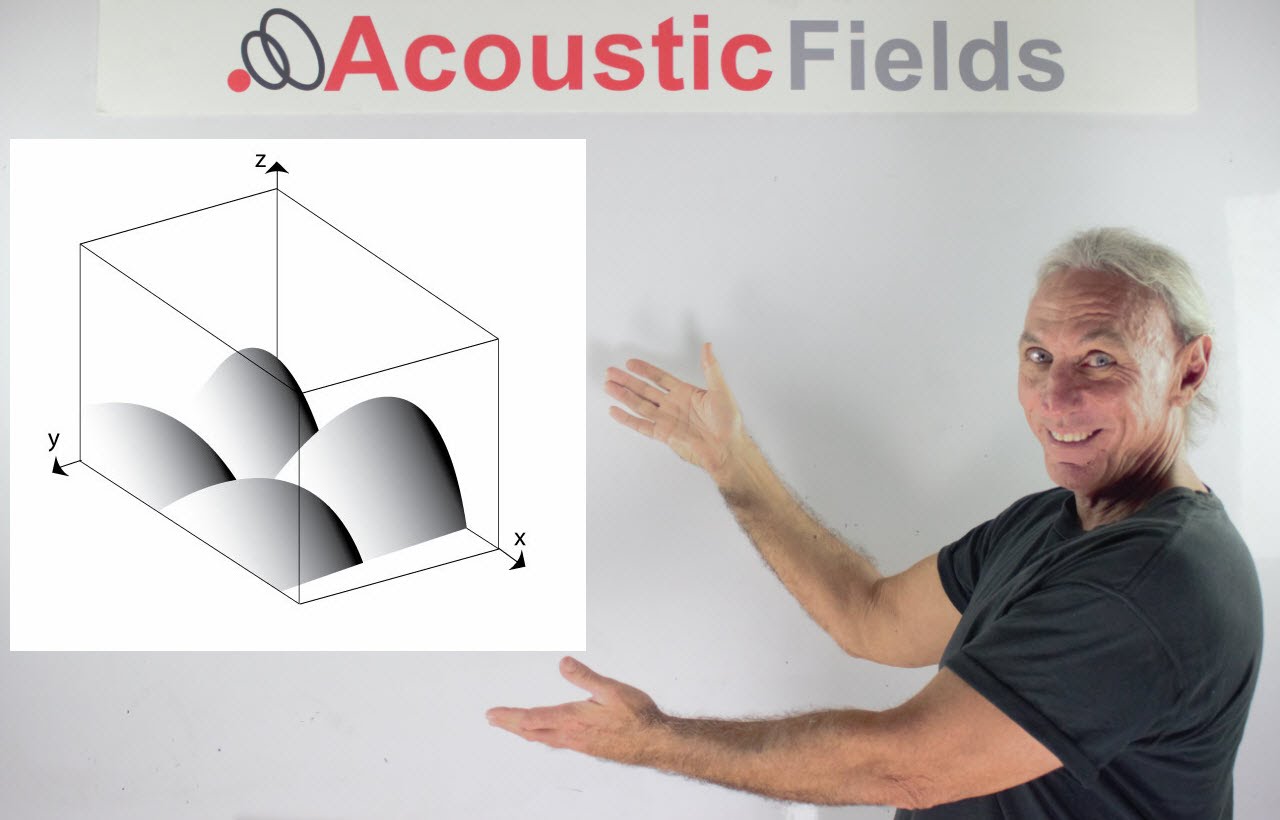Today we’re going to talk about what are the difference between Axial, Tangential and Oblique modes. We get a lot of people sending us emails and asking you know ‘What are these differences you refer to in your analysis?’ Well the axial modes are the pressure areas that occur between two parallel surfaces, so we could have pressure between two sidewalls.
We have pressure between the walls because those are two parallel surfaces and then don’t forget about the floor and the ceiling. We have pressure that exists between those but those are called something else. So axial pressure, axial modes are the pressure areas that occur between two parallel surfaces, that’s the optimum word here.
Tangential is between four walls, so we have pressure that occurs between the two parallel walls and then two more parallel walls, that’s the definition of tangential. Axial pressure is always much stronger than tangential. Tangential pressure is always much stronger than oblique, oblique is between all six walls. So we have ceiling, floor and then we have front, sides and rear wall. So we have three sets of pressure areas going on within the room. Well if you think about it the room has six sides so it’ll produce three sets of energy relations.
So it’s all dependent on the dimensions and it’s all dependent on the frequency that’s going to cause a resonance. A 30 cycle wave of energy will produce a different resonance in a different room than a forty will just because of the length of the wave. So all of these variables have to be taken into consideration and the strength of that resonance is dependent on the distance, obviously the smaller distance and the bigger wave is going to create more pressure. But the pressure between two walls is always the greatest.
So when you send in your room dimensions to me I always give you a report with these three pressure areas and I tell you what frequencies your problems are at. But your axial pressure, and I’ll note this on the analysis, is always going to be the stronger of the three. So it’s the air that moves between these surfaces that causes the sound and the resonance. It’s not the structure itself although it can be bit. In most case it’s the air being confined between two parallel surfaces, two sets of parallel surfaces and then all six surfaces that causes the problem, thank you.
In Summary
So I hope that helps you. If you have any questions at any time I am always on hand to help answer them. Leave them in the comments section or email me at info@acousticfields.com. If you would like to learn more about room acoustics please sign up for my free videos and ebook by joining the mailing list here. I send room tuning tips and things for you to test in your room every Wednesday. They are easy to follow and really help you enjoy more of your music. And if you would like your room acoustic issues analysed for free by me then please fill in the form here and I will be happy to take a look for you.
Thanks and speak soon
Dennis








Since it is exact, we need to know how to calculate room modes. Use the formula below as a room mode calculator for all modes, not just the axial room modes.
Y, Yes that is correct. However, knowing the frequency and amplitude of fundamental axial modes can go a long way to understanding tangential and oblique modes since axial is the largest number of the three. Knowing the frequency and amplitude of your largest unwanted pressure issues usually below 100 Hz. dictates all levels of treatment requirements.